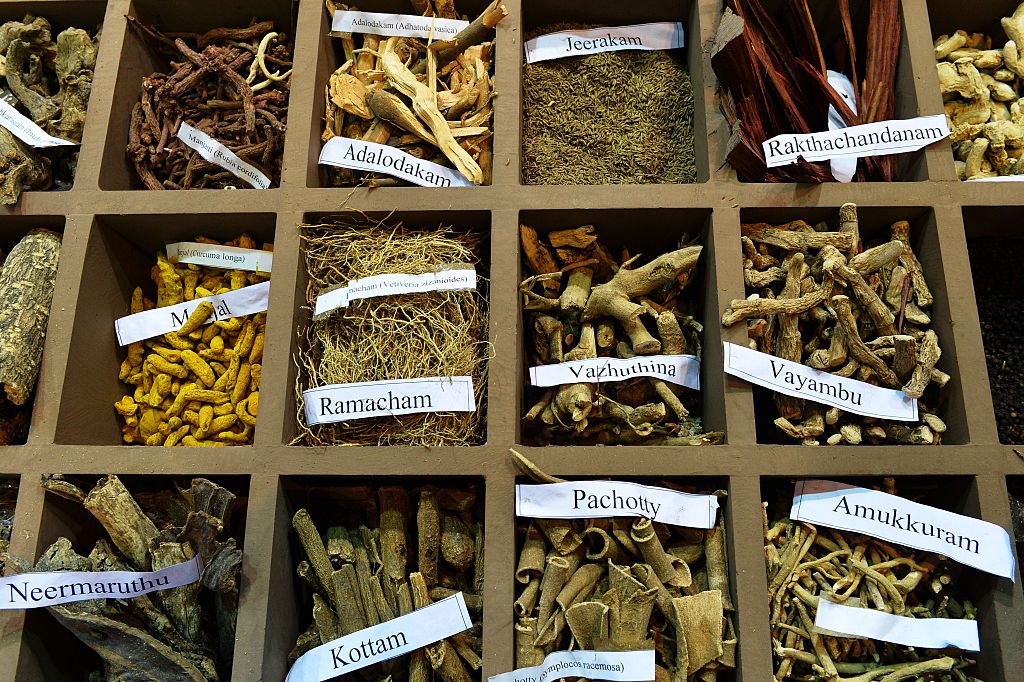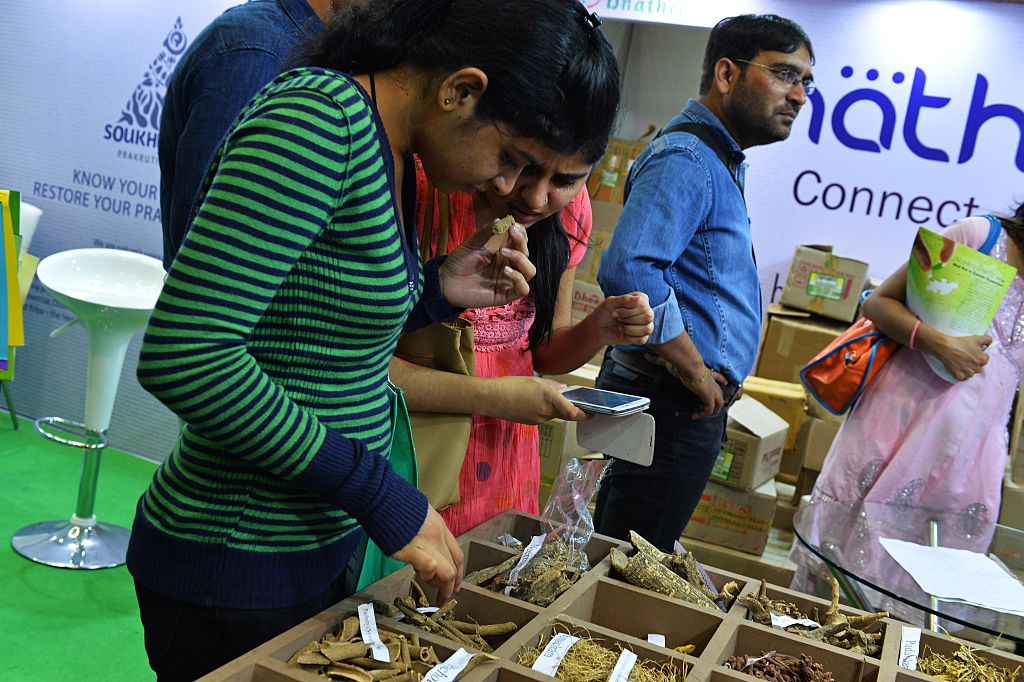- Saturday, July 27, 2024

By: Shubham Ghosh
IF Yoga is one area in which India has exported its traditional offerings to the world, Ayurveda is another. Having its roots in India, Ayurveda, a system of medicine, has now gained immense popularity across the world and the potential remains as mammoth.
In 2020, the global Ayurvedic herbs market size was valued at $9.5 billion and by 2028, it is expected to touch $21.6 billion, with a CAGR of 10.8 per cent during the forecast period. Ayurvedic herbs are a key component of the traditional Indian medicine that are said to protect the body from disease and have a wide variety of health benefits, including cardiovascular and mental well-being.
Despite facing a stiff challenge from modern medicine which has its origin in chemicals, Ayurvedic treatments are gaining favour because of their natural essence.
Moreover, the toxic nature of allopathic drugs and their rising prices are also pushing people towards alternate medicines and therein lies a massive scope for Ayurveda.

The science of Ayurveda has big prospects, thanks to the relationship between the human body and nature. Since the concepts of health and diseases are undergoing a transformation and people are getting more aware of herbal and ayurvedic remedies, Ayurvedic therapies are fast gaining popularity, both generally among people and medically worldwide. Besides, Ayurvedic medicines are also being used extensively in personal care and health supplements. The development of the retail structure has also given incentives to the market’s growth. These factors have overall bolstered the demand for Ayurvedic medicines.
It is because of the promise that Ayurvedic medicines have shown that market players are investing in new treatments and cures. They are also coming up with new strategies to expand the market and one can see an array of activities happening in the market to boost the world of Ayurveda.
The Indian government has also recognised the potential of Ayurveda and is promoting ways of Ayurvedic treatments.
The government, which set up a separate ministry of Ayush (abbreviated form for Ayurveda, Yoga, Naturopathy, Unani, Siddha, Sowa-Rigpa and Homoeopathy), recently initiated promotion of Ayush systems of medicine with the latest scheme called Ayurswasthya Yojana.

The scheme aims at starting authentic classical Ayush interventions for encouraging community healthcare along with supporting the establishment of Ayush medical health units.
The government took various initiatives in the past to promote Ayush treatment including the National Ayush Mission (NAM) in 2014 and AYUSH for Prevention and Control Non-Communicable Diseases in 2010.
The Covid-19 pandemic has also helped the market of Ayurveda. According to a report carried by Indian daily The Indian Express, the importance of Ayurveda has gone up in leaps and bounds once the pandemic broke out. Facing a medical emergency, people have increasingly adopted Ayurveda to boost immunity. They are more eager to take preventive healthcare remedies to keep the virus at bay and as demand for immunity-positioned supplements has increased, the preference for Ayurveda has gone up.
The Ayurvedic herbs market is categorised on the basis of herb types, form, disease indication, distribution channel and region.
By herb types, it is categorised into Withania Somnifera (Ashwagandha), Frankincense (Boswellia), Indian Gooseberry (Triphala), Bacopa Monnieri (Brahmi), turmeric, cumin, bitter melon, and others.
By form, it is categorised into raw, capsule/tablets and extracts.
By disease indication, it is divided into cardiovascular diseases, inflammatory diseases, diabetes, infectious diseases, auto-immune diseases, skin diseases, and others.
Based on distribution channel, the market is segmented into business-to-business and business-to-consumer.

Region wise, it is analysed across North America, Europe, Asia-Pacific, and LAMEA (Latin America, Middle East and Africa).
The appeal of Ayurveda has now crossed geographical boundaries. Organisations across the world have started launching Ayurvedic clinics. Recently, Santhigiri Holistic Health Center in association with Lootah Group of Companies in Dubai, the United Arab Emirates, has inaugurated the first exclusive Ayurvedic treatment services.
The Santhigiri Group is a pioneer of AYUSH medicines and remedies, under the procedure of the AYUSH ministry. The group has also launched a similar initiative in India.
There was a time when people questioned the effectiveness of Ayurvedic medicines due to lack of scientific evidence, deprived research and slow results. But with growing knowledge and awareness over the long-term benefits of Ayurveda, those disadvantages have been overcome and Ayurveda now has started witnessing a massive growth.
The mode of Ayurvedic treatment has also undergone changes and innovations, helping its advancement and enhancing its appeal. Exploration of treatment in different areas of healthcare has also unlocked big opportunities for Ayurveda.